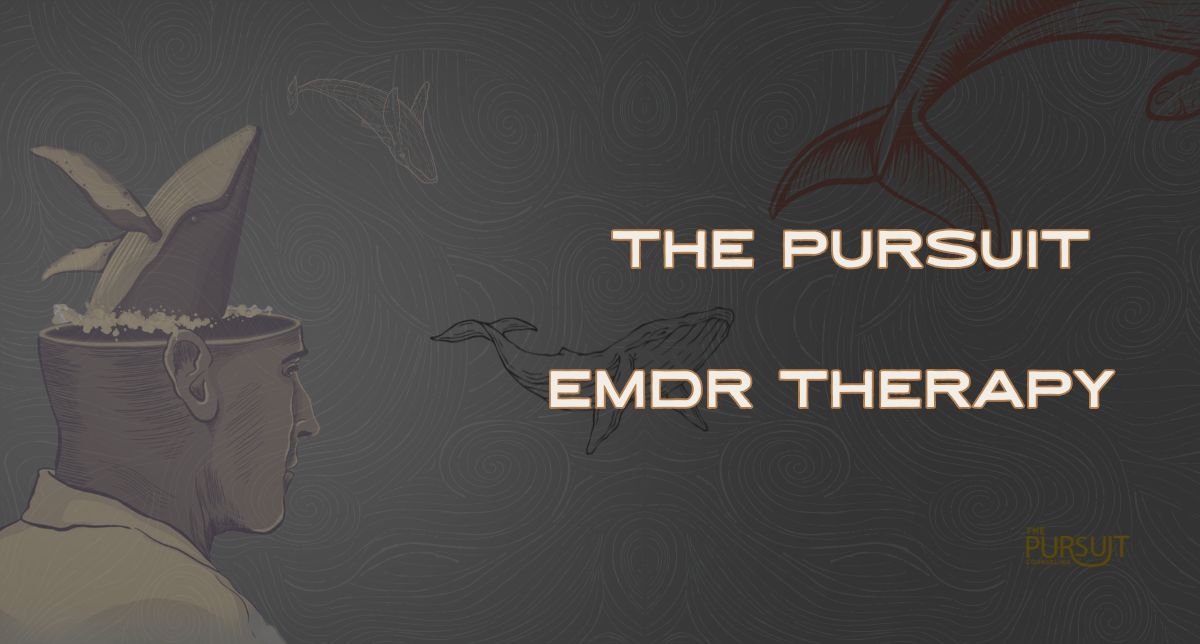Are you feeling weighed down, anxious, or burdened by things you can’t let go of? Do you find yourself easily triggered by the people around you or wish you had healthier relationships in your life? If you’ve heard of EMDR (Eye Movement Desensitization and Reprocessing) therapy, you might be curious about how it works and whether it’s right for you. EMDR is not just a buzzword—it’s a powerful, evidence-based therapy that helps women and men break free from emotional pain and reclaim their lives. Let’s learn about the eight Phases of EMDR Therapy today.

Whether you’ve been dealing with trauma for years or have faced challenging life experiences that leave you feeling stuck, EMDR can provide a path to healing. Understanding the 8 phases of EMDR therapy will give you a clearer sense of what to expect and how each step can help you process your past so that you can move forward with renewed strength and confidence.
The 8 Phases of EMDR Therapy
1. History Taking
Your EMDR journey begins with a trained therapist getting to know you and your story. In this phase, you’ll work together to identify the key memories and experiences that contribute to your current struggles. Whether it’s trauma from your childhood, a stressful relationship, or anxiety over life transitions, this step allows your therapist to develop a personalized treatment plan to address your unique needs.
2. Preparation
Next, your therapist will help you understand EMDR and how it works. This is also the phase where you’ll learn techniques to manage any emotional distress that might come up during therapy. These coping strategies, like deep breathing or visualization exercises, ensure you feel safe and grounded throughout the process.
Butterfly Hug (EMDR) | Coping Skills for Eating Disorder Recovery
3. Assessment
Here, your therapist will guide you in identifying specific memories or events that need to be processed. You’ll focus on the emotions, beliefs, and physical sensations linked to these memories. By honing in on the negative beliefs you hold about yourself (such as “I am powerless” or “I am not enough”), EMDR aims to rewire these thought patterns and replace them with healthier, more positive beliefs.
4. Desensitization
This is where the real work begins. Using bilateral stimulation—often through side-to-side eye movements or tapping—your therapist will guide you in reprocessing the traumatic memory. As the memory is brought to the surface, the brain begins to process it in a way that reduces its emotional intensity. Over time, the memory becomes less triggering, allowing you to detach from the pain and fear it once caused.
5. Installation
Once the memory’s emotional charge is reduced, the therapist helps “install” more positive, empowering beliefs. For example, if you once believed, “I am not worthy,” EMDR can help replace that belief with “I am deserving of love and respect.” This phase solidifies the new, healthy perspectives you’ve gained through therapy, reinforcing your emotional growth.
6. Body Scan
Trauma often lingers in the body, showing up as tension, discomfort, or other physical symptoms. In this phase, you’ll do a mental scan of your body to notice any remaining tension or sensations linked to the memory. EMDR works to release these sensations, helping you feel more relaxed and at ease in your body, allowing you to reclaim your physical and emotional well-being.
7. Closure
Each session of EMDR ends with closure, ensuring that you leave the session feeling grounded and safe. If the memory wasn’t fully processed during that session, your therapist will guide you through relaxation techniques and other exercises to help you manage any lingering emotions until the next session. The goal is to make sure you leave feeling balanced.
8. Reevaluation
At the start of the next session, your therapist will check in to see how you’re feeling and whether the memory has been fully processed. This phase allows both you and your therapist to track your progress and determine if there are any additional memories or emotions that need attention. It’s all about ensuring long-lasting healing and helping you build a more positive future.

Why EMDR Works for Women
EMDR therapy is especially effective for women who have faced trauma, anxiety, or overwhelming stress throughout their lives. Whether you’ve experienced a specific traumatic event, such as a loss or an assault, or you’ve lived through many stressful situations throughout your life, EMDR can help you find relief. It’s not just for those with PTSD—EMDR is for anyone who has unresolved emotions from the past that are impacting their present.
As women, we often carry invisible burdens, from societal pressures to personal experiences. EMDR is a chance to finally release that weight and rediscover your inner strength, resilience, and joy.
—
Ready to Begin Your Healing Journey?
If you’re tired of being held back by the past and ready to experience emotional freedom, EMDR therapy could be the solution you’ve been searching for. Don’t let trauma, stress, or anxiety dictate your future. Take the first step today by reaching out to a trained EMDR therapist who can guide you on this transformative journey. Your healing is possible, and a brighter, more empowered life is within reach.
—

View comments
+ Leave a comment